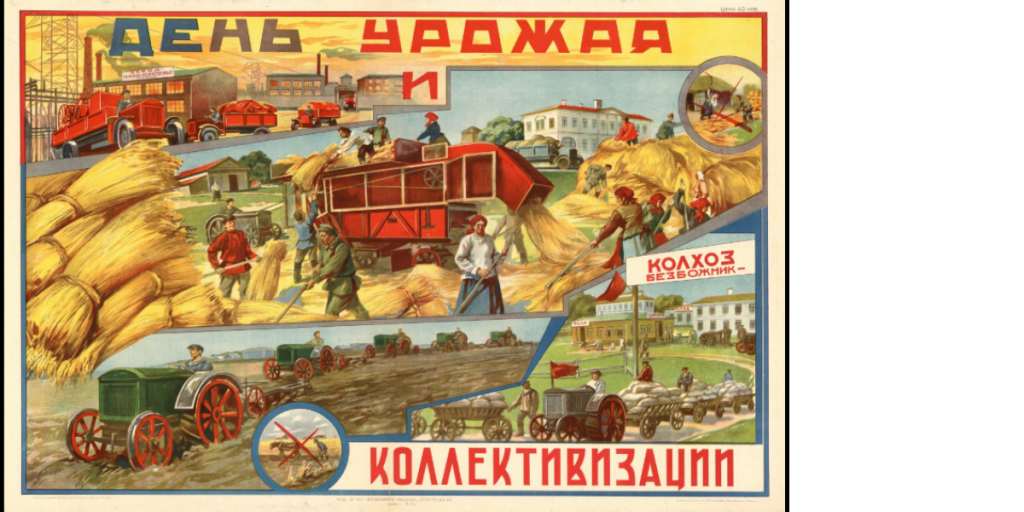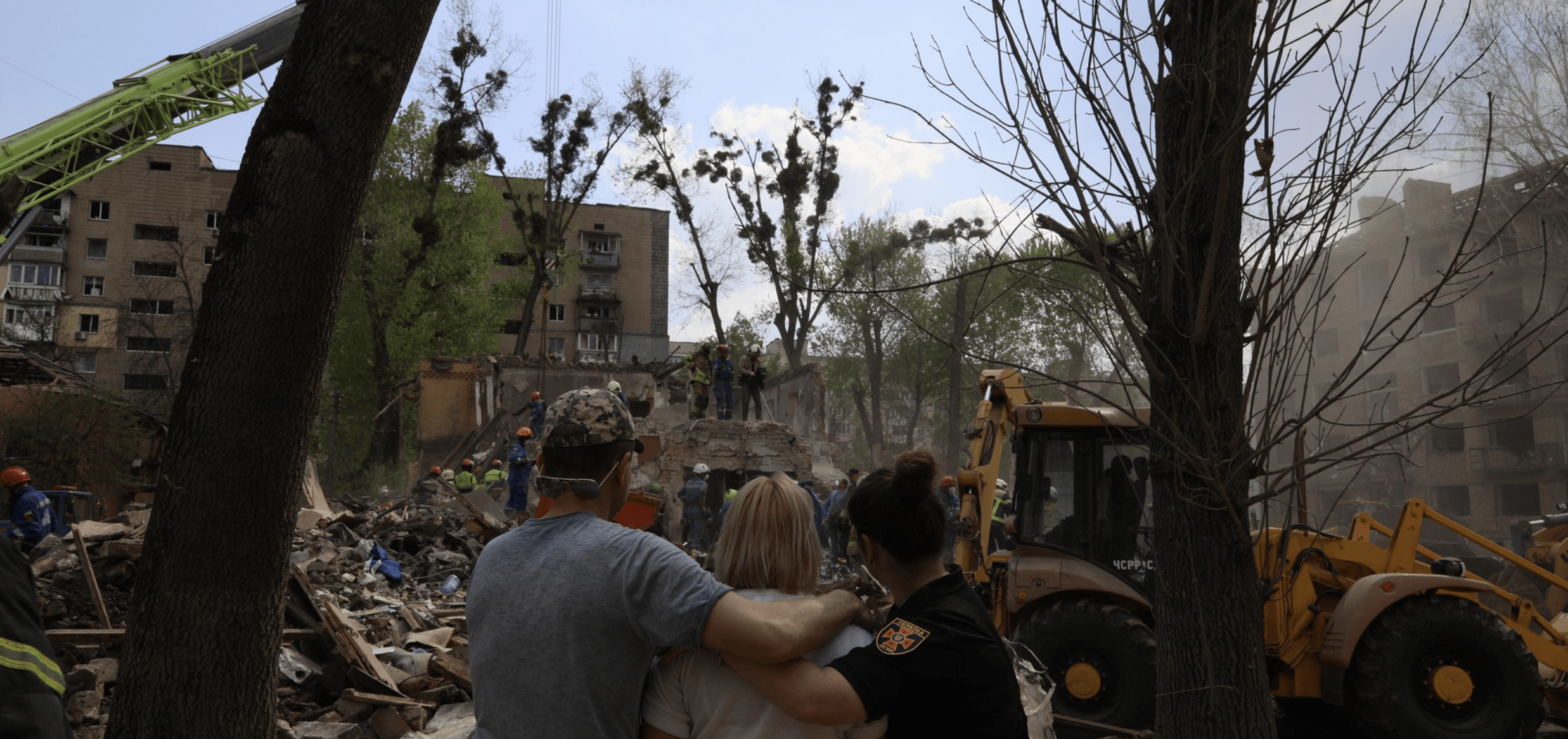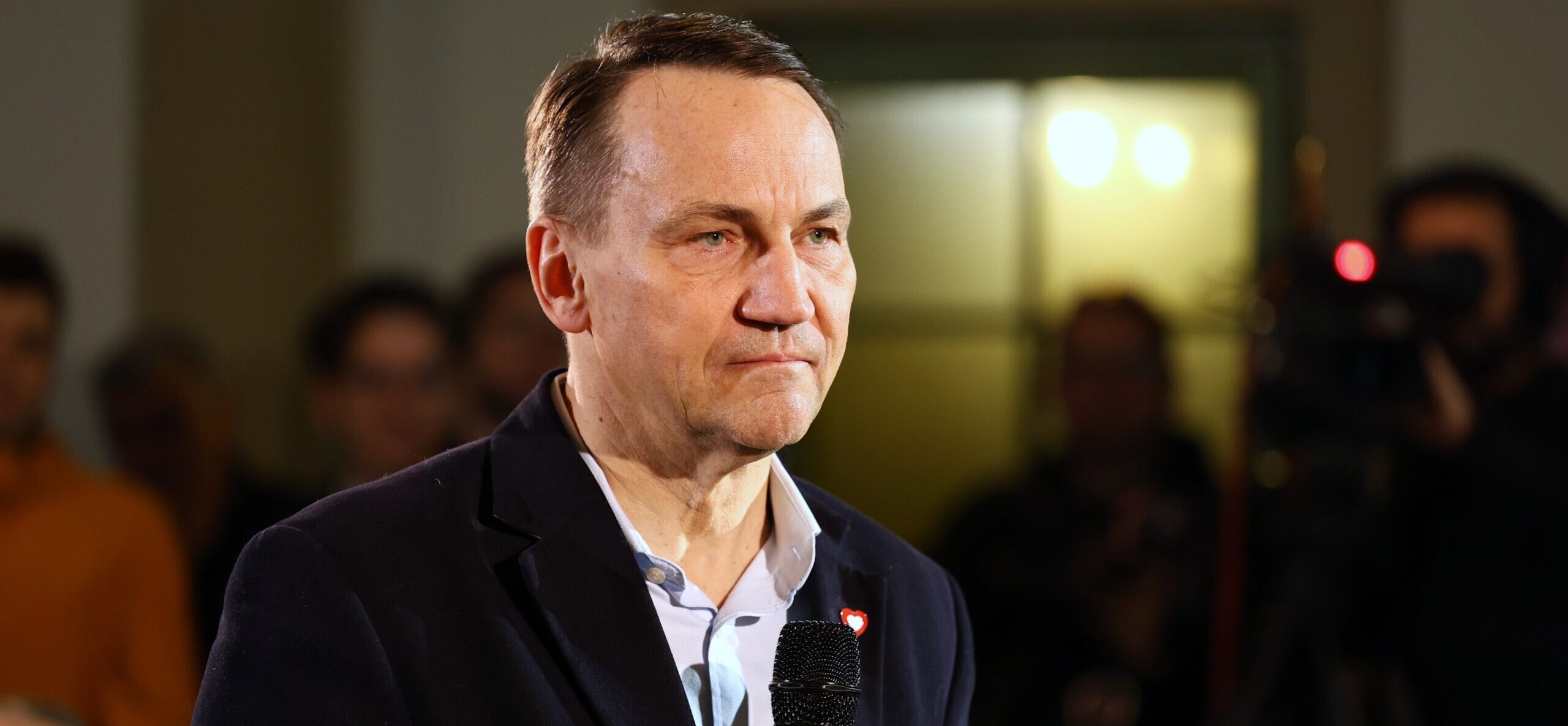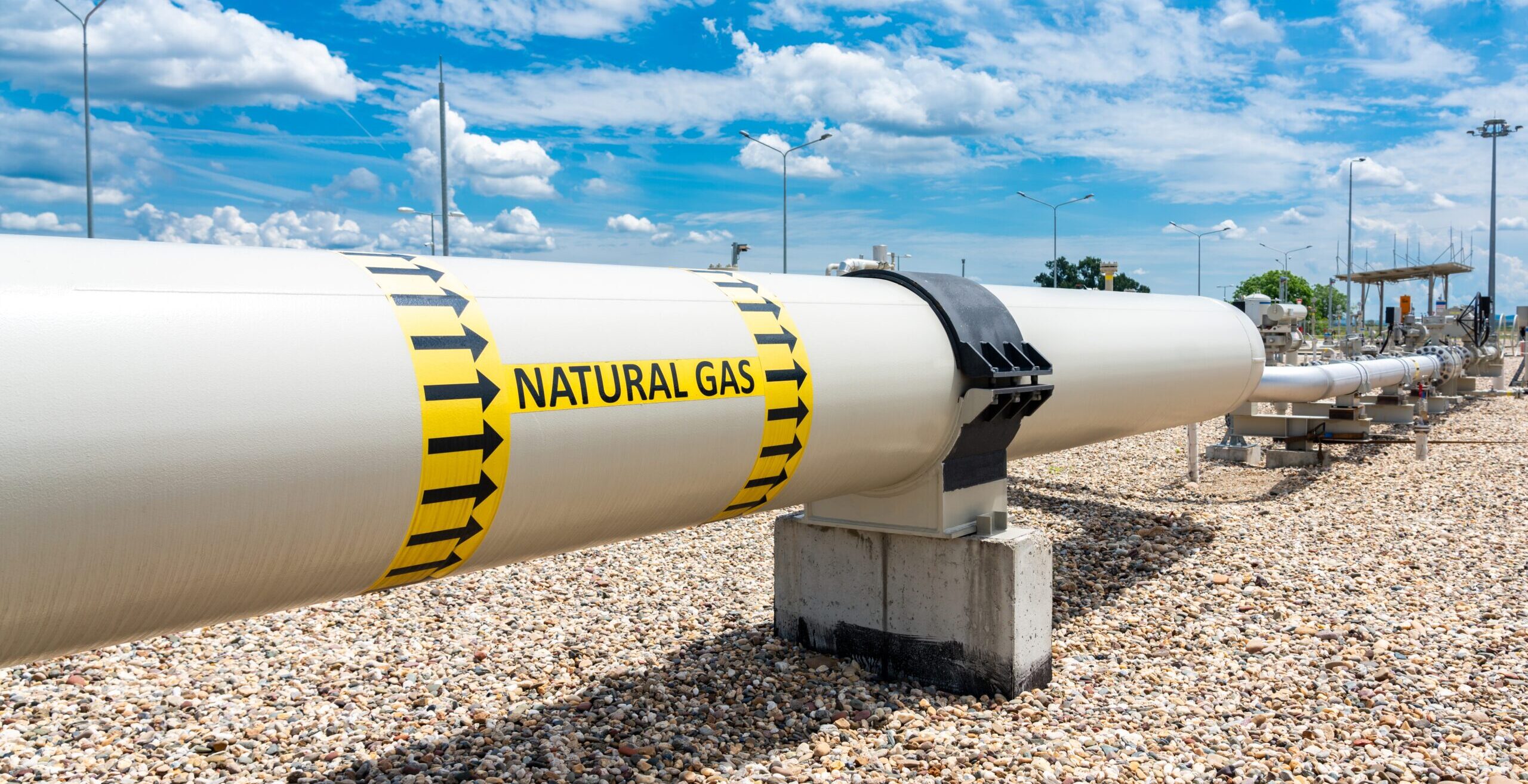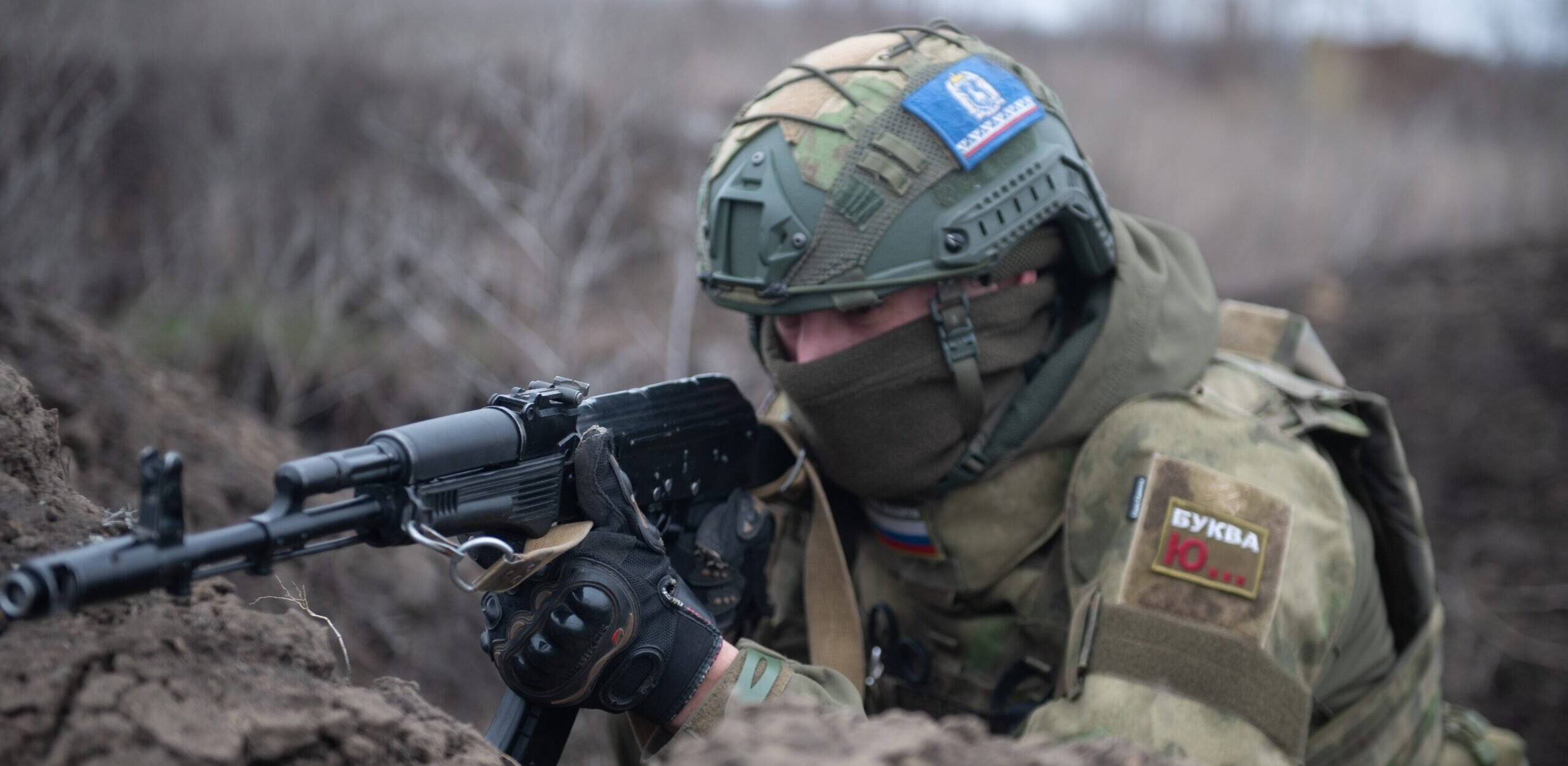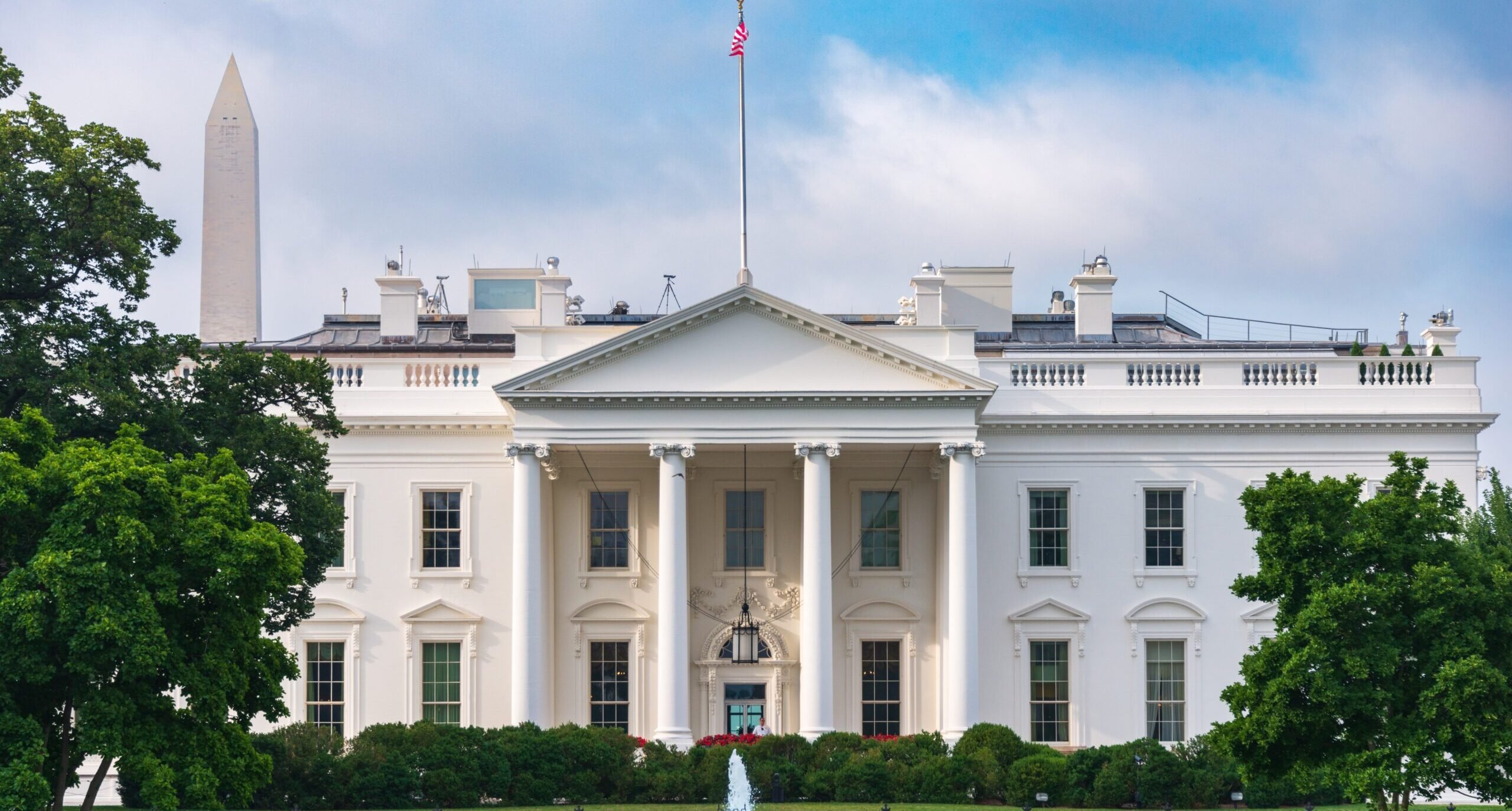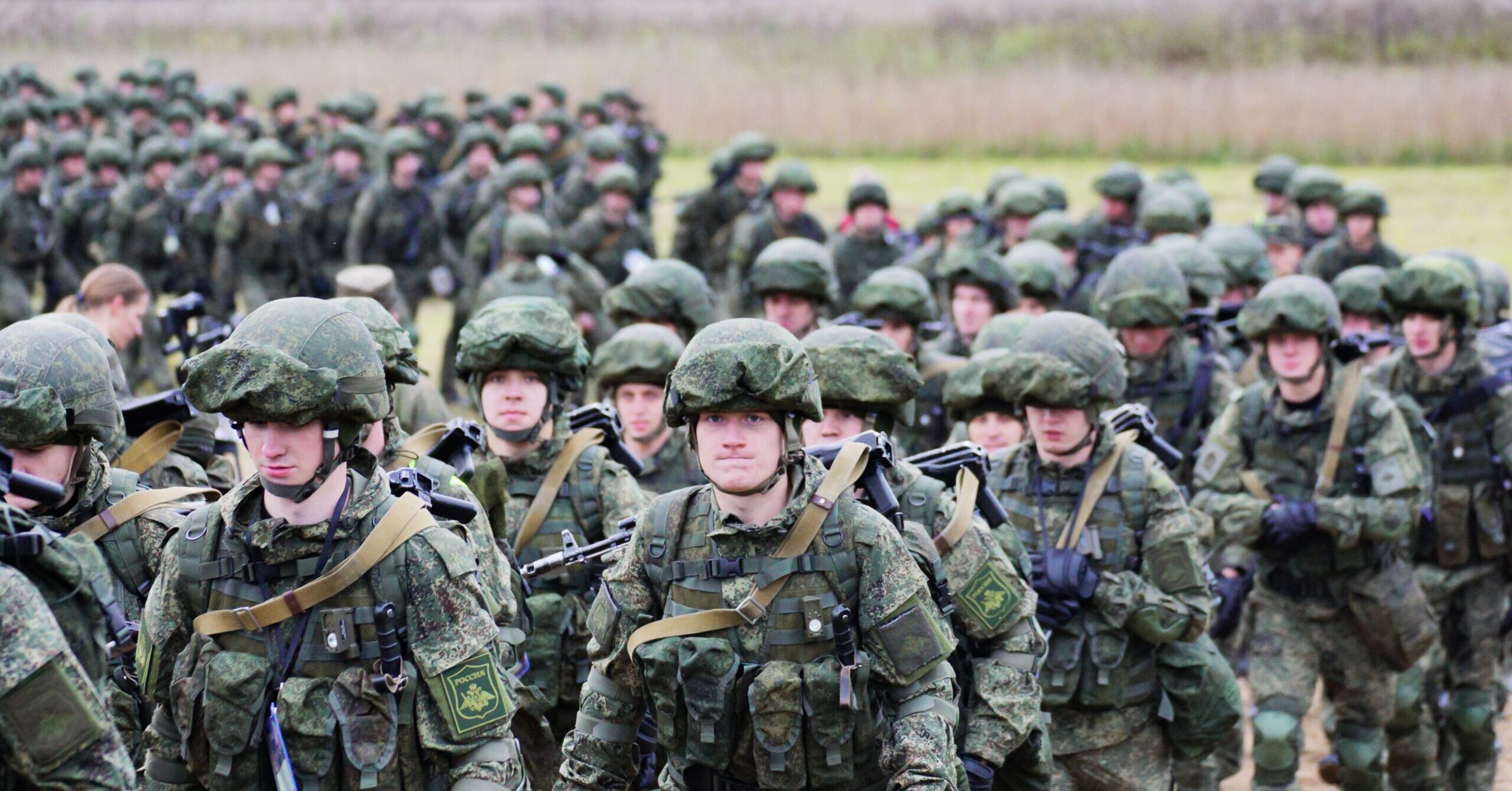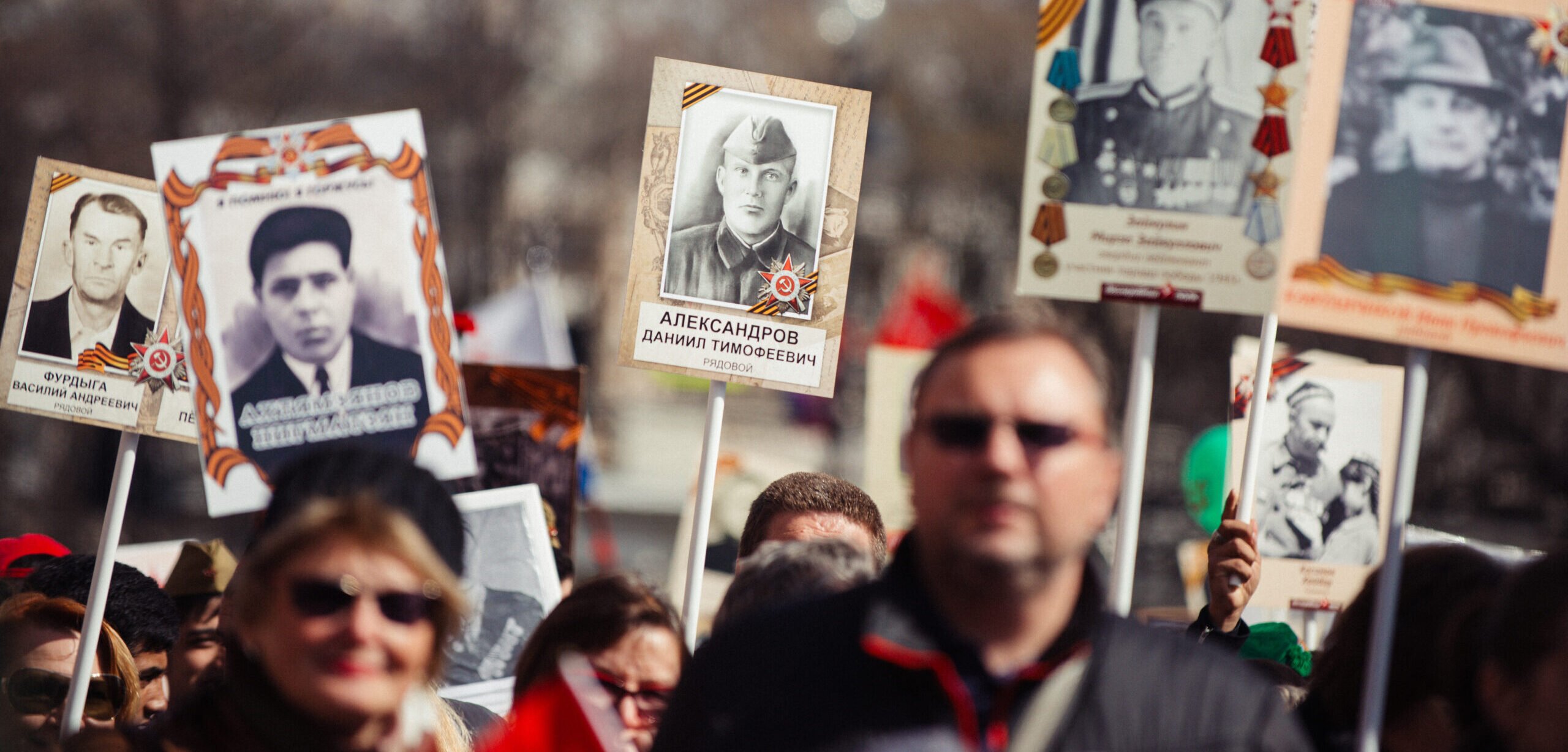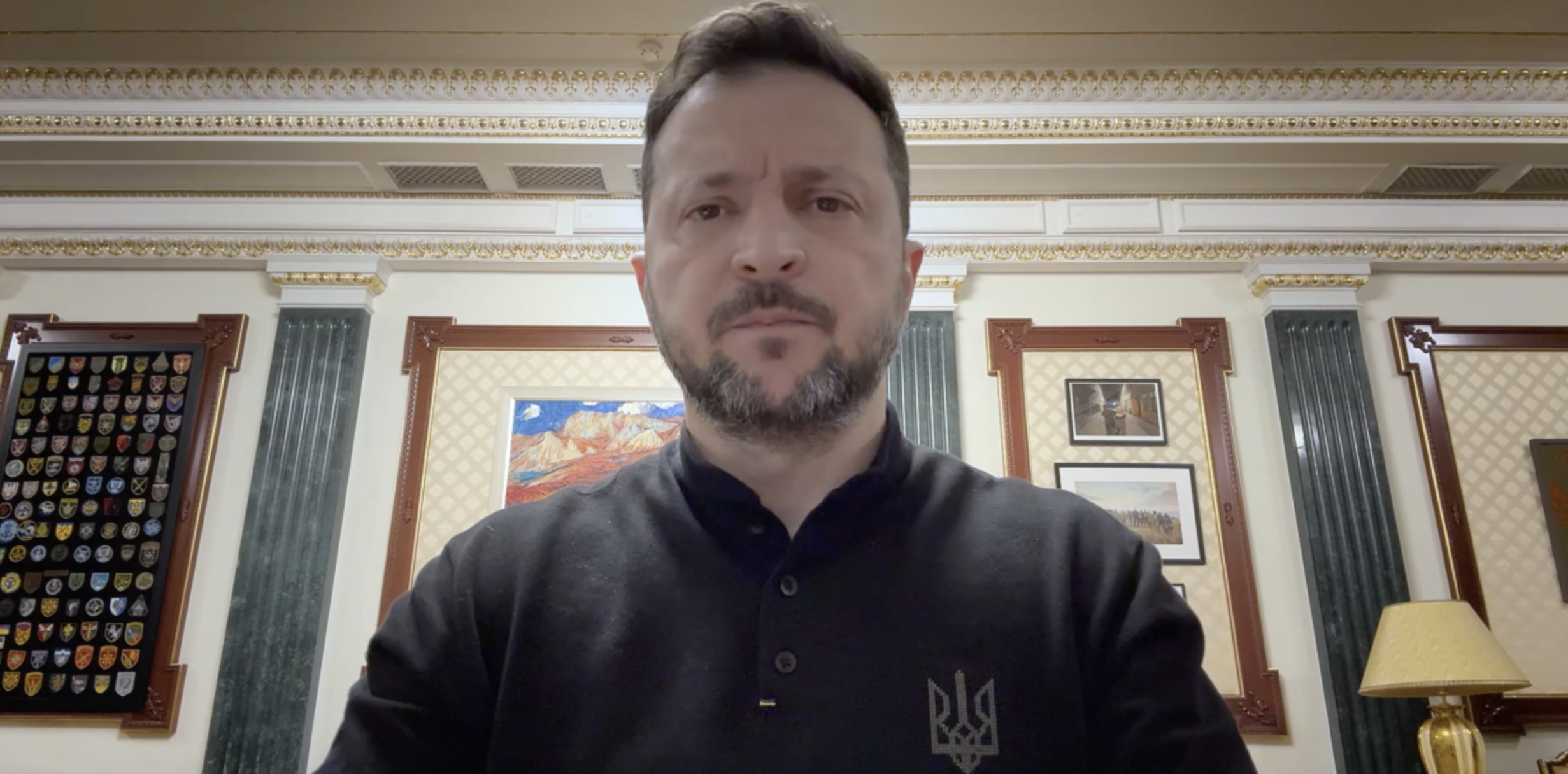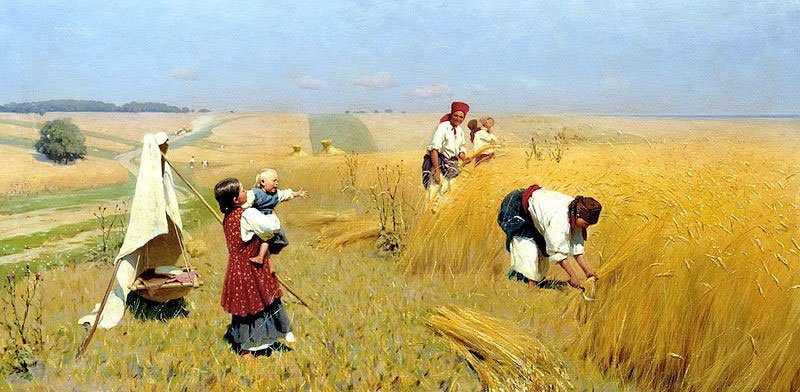
Above: “Reaper” by Mykola Pymonenko.
The fourth Saturday of November is the day to remember the Holodomor in Ukraine. Holodomor, meaning starvation death, was the kremlin’s attempt to destroy the Ukrainian nation by destroying its prosperous agricultural class. It peaked from 1932-1933 when at least four million Ukrainians – in the breadbasket of Europe – starved because their food was stolen by kremlin jackboots.
Moscow covered its barbarity with lies and misinformation. To this day, the kremlin denies that the Holodomor took place despite reams of irrefutable evidence. Now the world is finally understanding that the entire russo-soviet myth is built of lies and denial. More and more people are learning the truth about moscow’s long-term obsession with destroying Ukrainian culture and prosperity, particularly Ukraine’s ancient and deep connection to its land.
On this year’s 89th Holodomor anniversary, moscow is up to its same bloody tricks – using food as a weapon against civilians to somehow bolster its importance in the world. It is worth taking a look at Ukraine’s incomparably rich agrarian heritage and how an envious russia has sought to destroy it for generations.
UKRAINIAN ANCIENT WISDOM AND BLACK EARTH
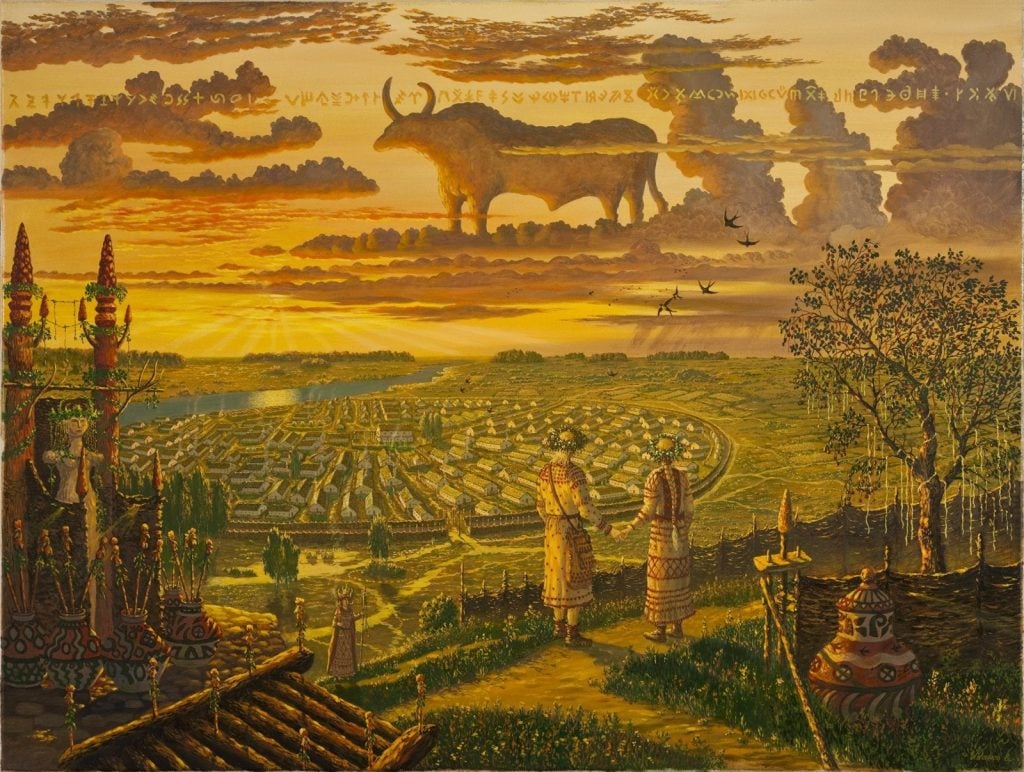 Above: “Trypillia” by Vsevolod Ivanov. Archeological evidence shows that crops have been cultivated in Ukraine since the prehistoric Trypillian culture including wheat, barley and legumes.
Above: “Trypillia” by Vsevolod Ivanov. Archeological evidence shows that crops have been cultivated in Ukraine since the prehistoric Trypillian culture including wheat, barley and legumes.
Ukrainians know that their land is special and treat it with appropriate respect. Ukrainian culture is reverent of the earth and perpetuates agriculture wisdom from generation to generation. The names of Ukrainian months are not those of Rome used in the West and by Russia, but of the seasonal cycles. April means flowers, August means harvest. National holidays are often tied to ancient agricultural cycles and celebrate the generous earth.
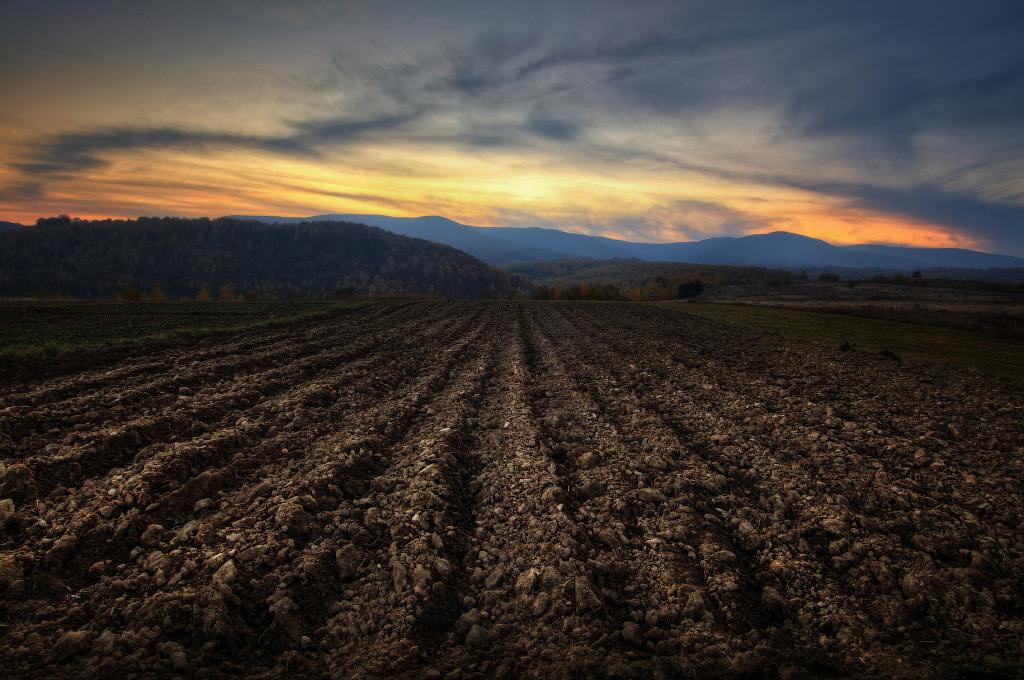 Above: The United Nations estimates that Ukraine has one fourth of the earth’s black soil, rich in humus, deposited by a once greatly enlarged Black Sea. (Agropolit)
Above: The United Nations estimates that Ukraine has one fourth of the earth’s black soil, rich in humus, deposited by a once greatly enlarged Black Sea. (Agropolit)
Ukraine is blessed with a quarter of the best agricultural earth on the planet – “black earth” which gets its color from the high level of organic matter so loved by plants. The World Bank estimated that within the first few years after independence, only five percent of arable land – 70% of Ukraine’s land is arable – had been privatized yet was already producing over 40% of Ukraine’s agricultural output. This was a testament to both the extent that soviet collectivization had deformed and damaged the agrarian sector and to Ukraine’s acumen for farming.
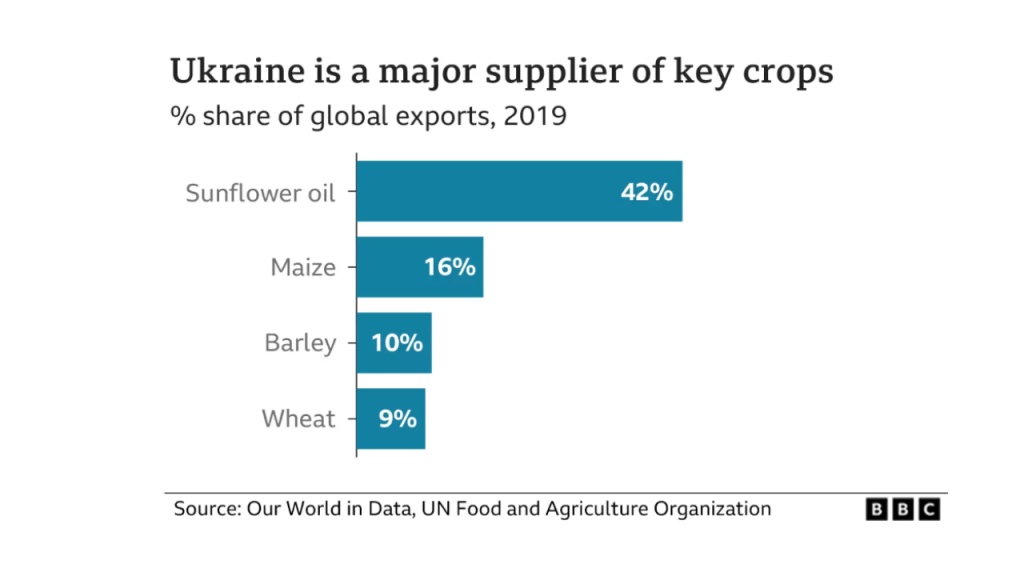
Chart: BBC
Today, Ukraine is one of the world’s biggest exporters of food commodities. Thanks to a bumper crop in 2019, Ukraine became the world’s biggest grain exporter with a 26% year-on-year increase. Ukraine exports wheat, corn and barley and is the world’s largest exporter of sunflower oil.
MOSCOW DESTROYING UKRAINIAN AGRICULTURE, 1928 -1933
Communist collectivization distorted agriculture for generations
Above: Propaganda poster c 1930 “Harvest day and collectivization” was a complete lie about the realities of the disastrous communist take over of the agrarian sector. (Arthive)
The russian empire had a history of famines due to its inability and unwillingness to improve the lives of its millions of poor, uneducated peasants. The situation became dramatically worse during World War I, the communist revolution and civil war when the russian empire and then the bolsheviks confiscated grain to feed their war machines. The prosperous landed class tried to fight back, becoming a target for annihilation by the kremlin in years to come.
Moscow began its bloody campaign to collectivize the agricultural sector in 1928. The goal was to destroy the private farm, replacing it with massive collective farms. Propaganda claimed these “kol-khoz” were owned by “the people” when, in fact, they were run by incompetent communist party loyalists. To cover it’s incompetence, the kremlin found a scapegoat to blame for the famines resulting from collectivization – the “kulaks” or successful farmers concentrated in Ukrainian speaking areas. Stalin riled up proletariat resentment by claiming that kulaks caused famine by hoarding grain and must be liquidated as a class.
Ukrainian Holodomor 1932-1933
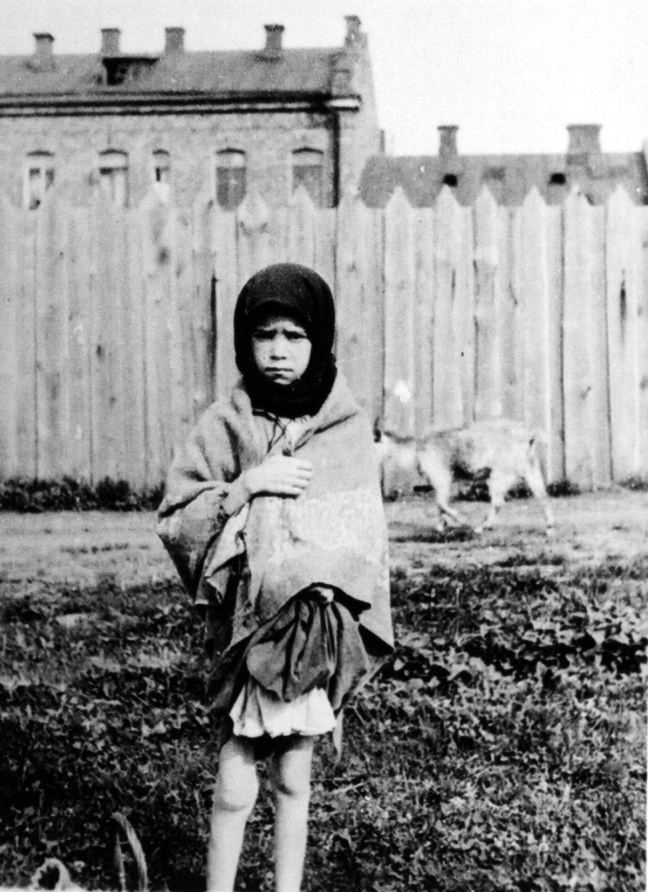
“A girl – famine victim. Kharkiv, 1933”. (Digital Atlas of Ukraine)
“Farms, villages, and whole towns in Ukraine were placed on blacklists and prevented from receiving food. Peasants were forbidden to leave the Ukrainian republic in search of food. Despite growing starvation, food requisitions were increased and aid was not provided in sufficient quantities. The crisis reached its peak in the winter of 1932–33, when organized groups of police and communist apparatchiks ransacked the homes of peasants and took everything edible, from crops to personal food supplies to pets.” (Britannica)
By the early 1930s, collectivization had created a crisis in food supply. Moscow communist-run agriculture led to significant decreases in yield, wasteful harvesting, storage and transportation. A furious kremlin deepened its campaign to arrest, deport and murder the Ukrainian farmer class. Researchers estimate that up to five million Ukrainians died from starvation during the Holodomor while millions more lost their farms and livelihoods, were jailed, deported and murdered by the communist regime.
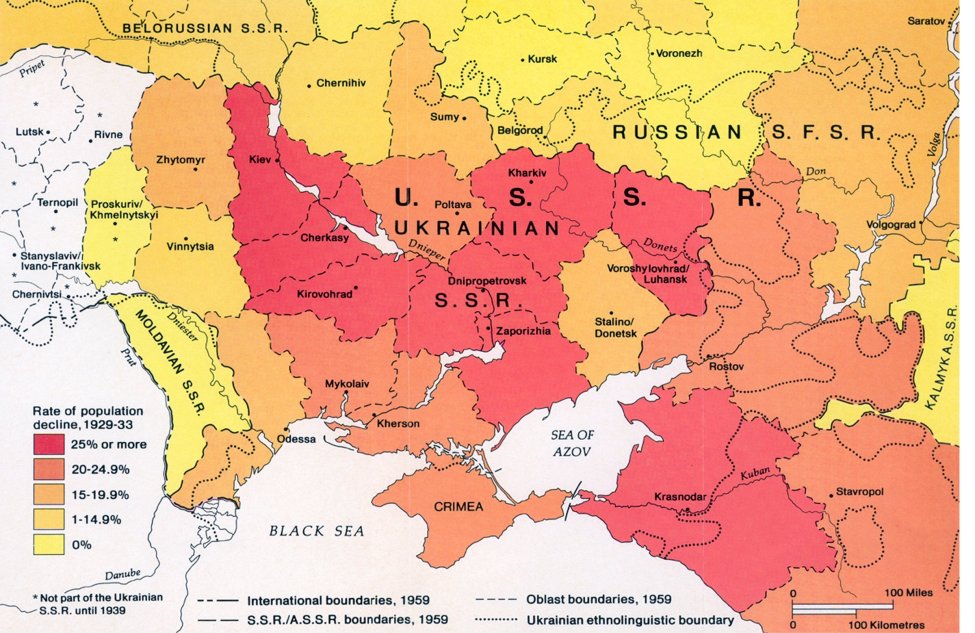
Above: Rate of population decline under moscow’s man-made famine from 1929-1933. Compare the map below of ethnic Ukrainian lands in 1919. (Maidan Translations)
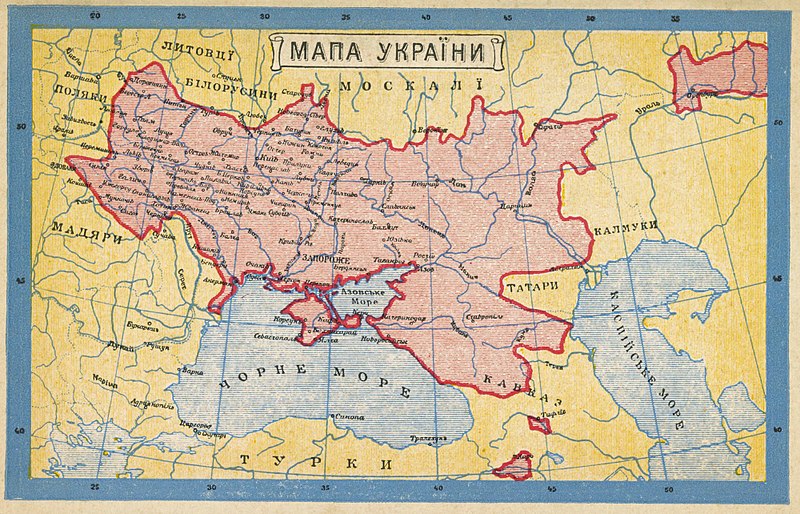
Above: Map of ethnically Ukrainian-speaking lands, 1919. (Wikimedia Commons)
MOSCOW DESTROYING UKRAINIAN AGRICULTURE, 2022
Stealing Ukrainian Grain
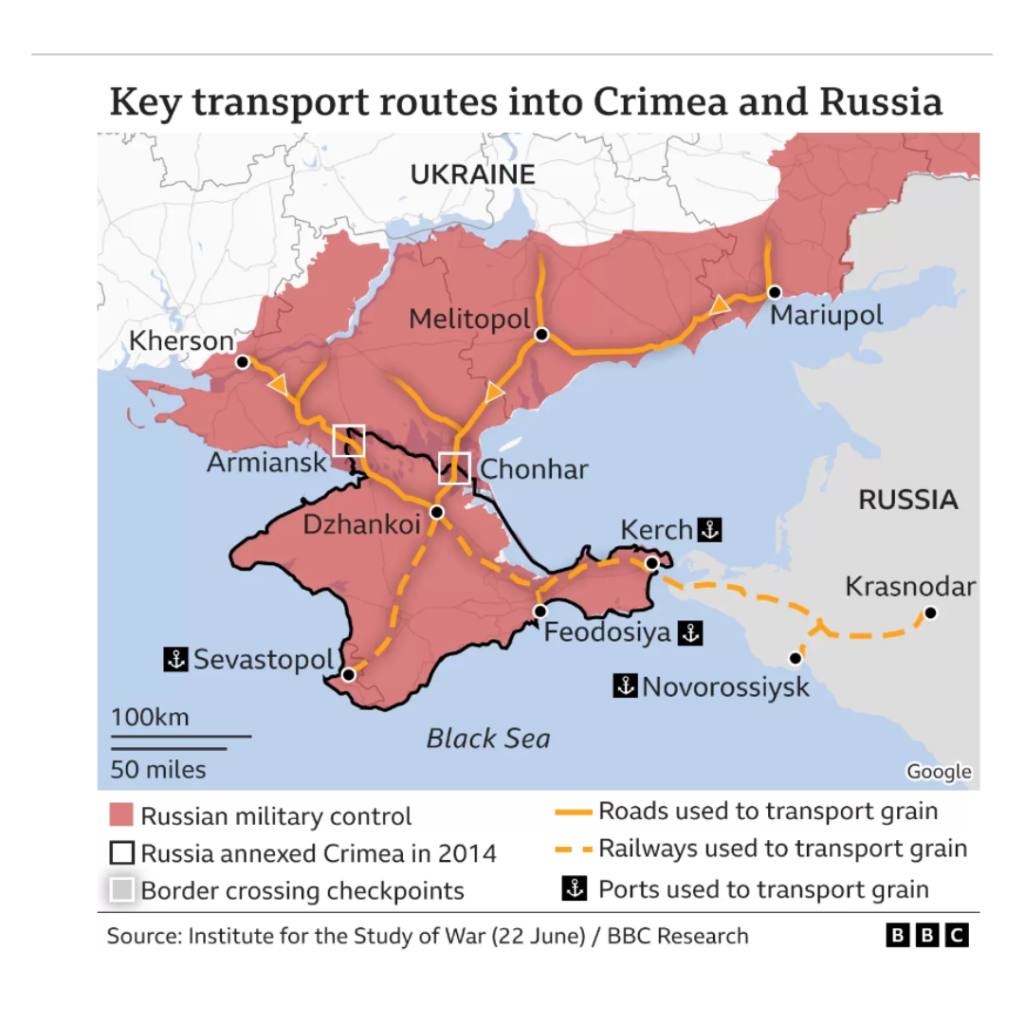
Above: Overland transport routes for the kremlin’s grain stealing program. (BBC)
“An investigation by the Associated Press and FRONTLINE has found the [cargo ship] Laodicea, owned by Syria, is part of a sophisticated Russian-run smuggling operation that has used falsified manifests and seaborne subterfuge to steal Ukrainian grain worth at least $530 million — cash that has helped feed President Vladimir Putin’s war machine.” (PBS)
Early in the invasion, the Associated Press used satellite imagery and radio communications to track over thirty russian ships making dozens of trips from the Sea of Azov and Crimea to Turkey, Syria, Lebanon and other countries. From the start of the 2022 invasion, moscow began confiscating and smuggling Ukrainian grain, carried out by moscow-controlled wealthy business interests in russia and Syria. The invaders transported truckloads of stolen grain to the Sea of Azov and Crimea. From there, grain was loaded onto russian ships with false documentation and shipped on for sale abroad.
Destroying Ukrainian Agricultural Land
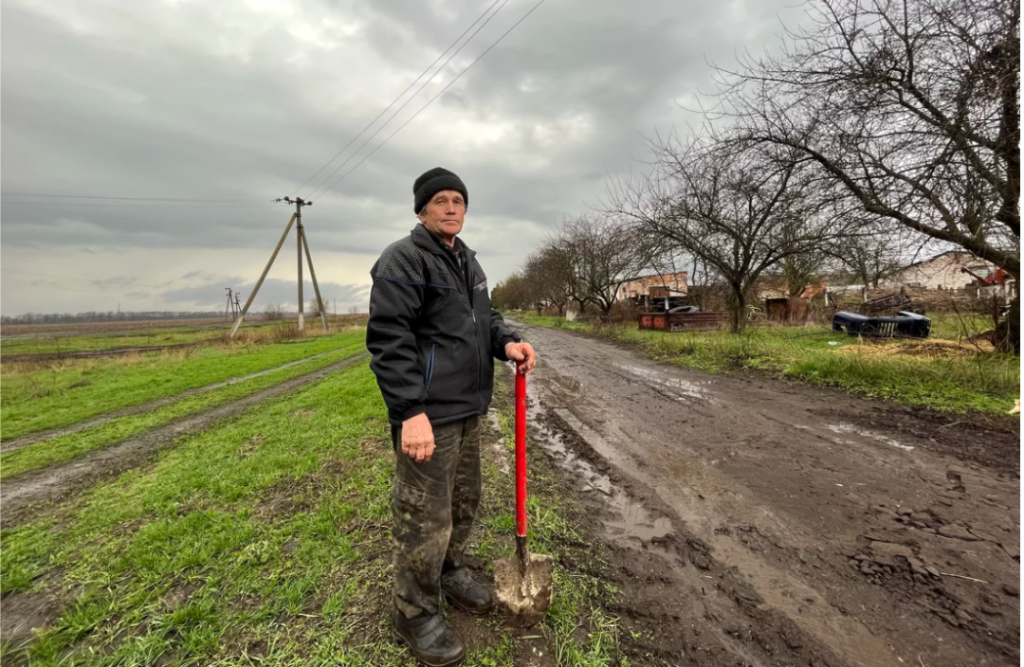 Ukrainian farmer Anatolii Kulibaba told of how the invaders killed his son and business partner. Kulibaba says Russian troops slept in his barn, slaughtered and cooked his pig, stole his fuel and mined his fields. “My fields were destroyed by the shelling,” Kulibaba says.(NPR)
Ukrainian farmer Anatolii Kulibaba told of how the invaders killed his son and business partner. Kulibaba says Russian troops slept in his barn, slaughtered and cooked his pig, stole his fuel and mined his fields. “My fields were destroyed by the shelling,” Kulibaba says.(NPR)
“For Ukrainian farmer Anatolii Kulibaba, this year’s planting season comes with anguish. In the first few days of the war, Russian soldiers delivered an even crueler blow: They killed Kulibaba’s son, Oleksandr, as he was traveling to their village of Bilka, 25 miles from the Russian border. Kulibaba says he could really use Oleksandr’s help right now, trying to restart production after Russian forces took over and destroyed parts of their farm. Russian troops slept in his barn, slaughtered and cooked his pigs and parked their tanks in his cornfields.” (NPR)
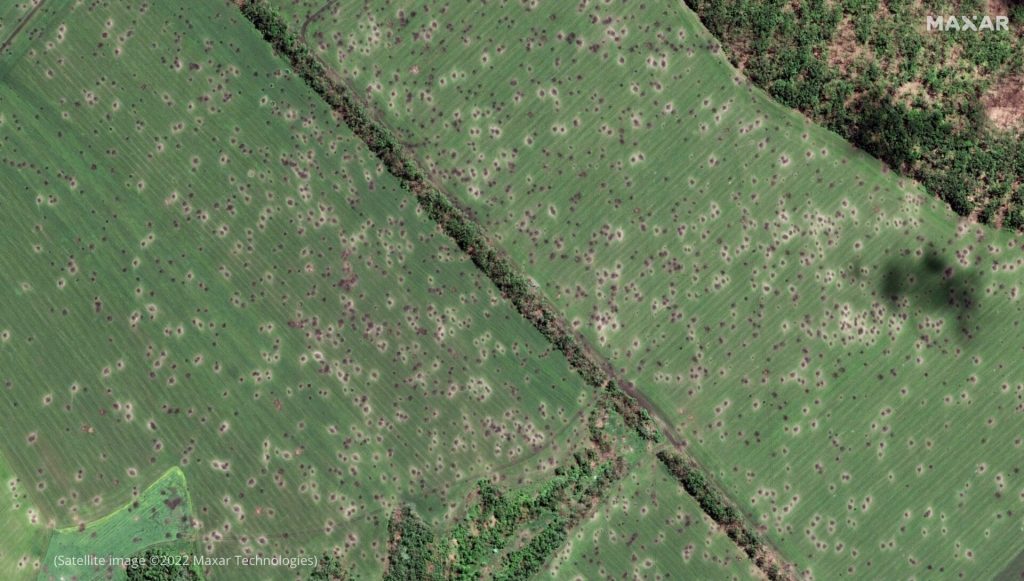
This Maxar WorldView-2 image shows fields northwest of Slovyansk, Ukraine, peppered with artillery craters on June 6, 2022. Credit: “Satellite image ©2022 Maxar Technologies.”
Above: Satellite image shows agricultural fields northwest of Slovyansk, Ukraine, covered with artillery craters on June 6. (US Embassy)
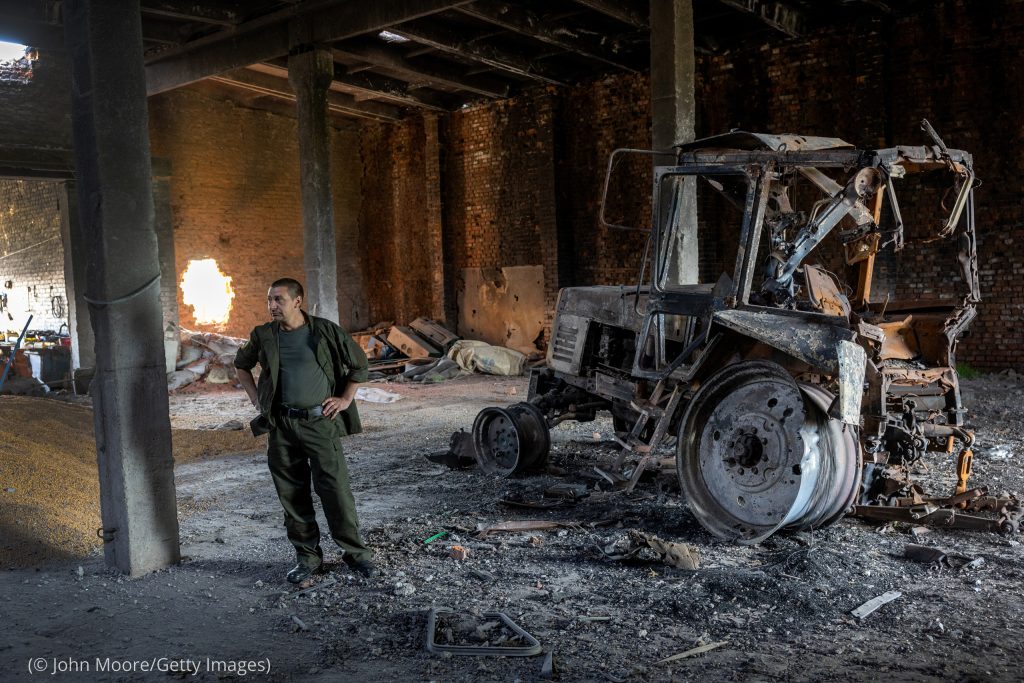
A Ukrainian farm worker in Cherkaska Lozova stands near a tractor that he said Russian shelling had destroyed in May 2022. He said Russian forces also destroyed a grain warehouse and farm equipment while occupying territory outside of Kharkiv. (US Embassy)
Even as moscow steals Ukrainian grain, it seeks to destroy Ukrainian farms and farmland. It has mercilessly and intentionally bombed farmland and equipment, grain trainsporation and storage facilities, research institutions and shipping terminals. Ukrainian farmers are planting and harvesting under fire and struggle to find buyers and transportation to market. Without help, the sector faces bankruptcy.
Blockading the Black Sea
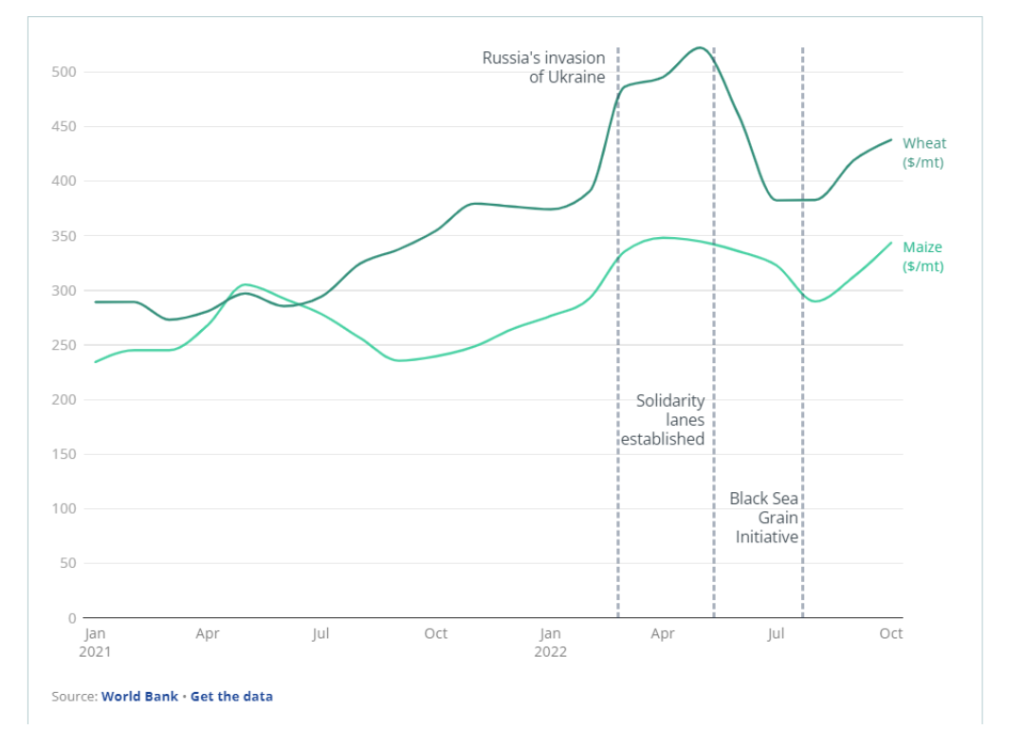
Chart: Commodity market price dynamics for wheat and corn from January 2021 to October 2022. Prices spiked in anticipation of the russian invasion, then fell sharply as the Black Sea Grain Initiative was negotiated and implemented. (European Council)
“Russia’s unprovoked and premeditated war of aggression has exacerbated the global economic outlook with sharply rising food, fuel and energy prices. Combined with Russia blocking the exit routes for Ukraine’s grain, the world is now facing a worsening state of food insecurity and malnutrition … This is at a time when 43 million people were already one step away from famine.” Joint Statement of the G7 governments
In addition to stealing Ukrainian grain and ruining agriculture, moscow blocked Black Sea grain shipments in order to strangle Ukraine’s economy and to use world food insecurity as a blackmail bludgeon against the West. Its twisted propaganda tried to blame Ukraine for food shortages in order to inflame duped allies in Africa and Asia. The G7 meeting in May produced a joint statement condemning russia for callously using starvation as a political tool.
Russia’s blockade trapped over 20 million tons of Ukrainian grains and other foods bound for export. Since Ukraine is one of the world’s largest exporters of food, this caused food prices to increase worldwide. Higher prices put the purchase of sufficient foods out of the reach of many developing countries and caused public unrest across the globe.
The Black Sea Grain Initiative
In July, United Nations and Turkiye mediated the Black Sea Grain Initiative – an agreement to allow for safe passage of Ukrainian grain across the Black Sea and to facilitate russian grain and fertilizer exports. By mid October, over 400 voyages had successfully departed Ukrainian ports carrying nearly 9.5 million tonnes of grain and other food products although Ukraine’s agricultural exports are still only two-thirds of previous years.
Where has Ukrainian grain gone?
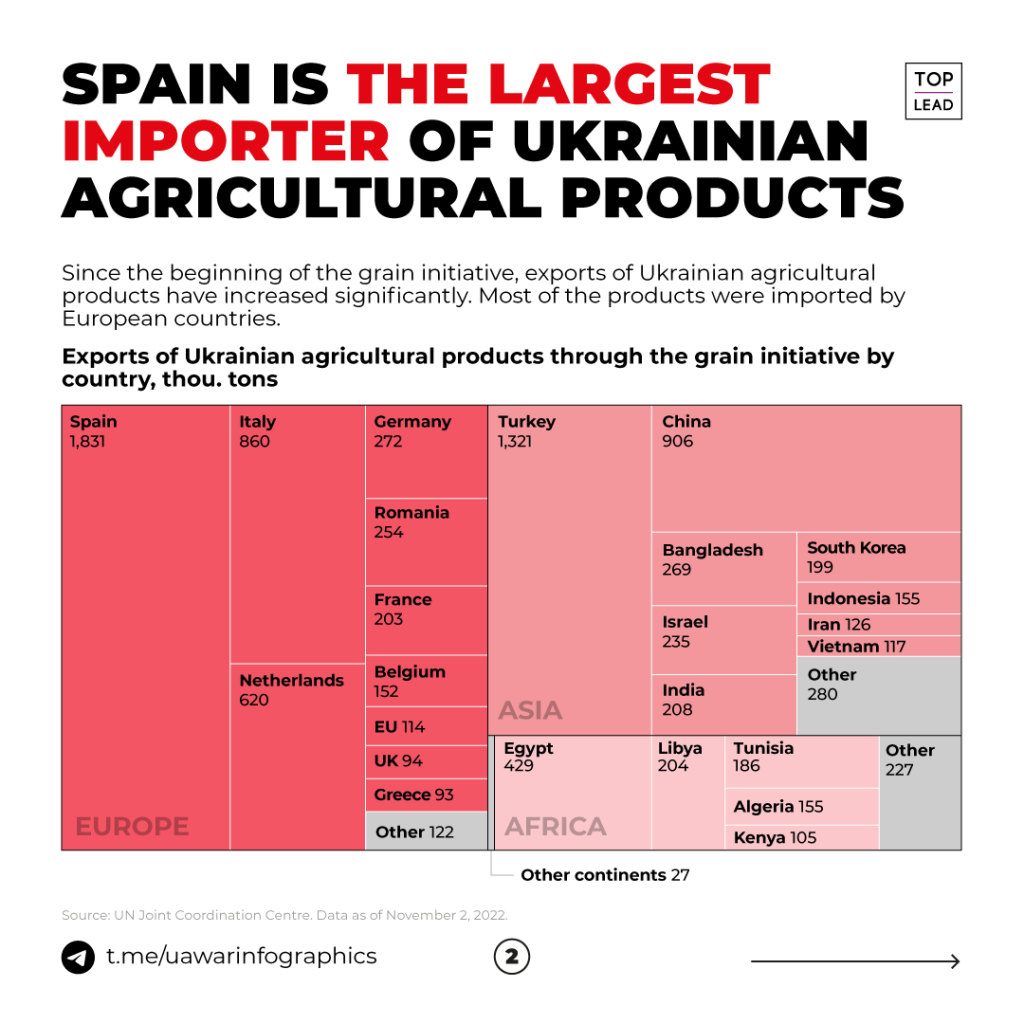
Chart: Although Europe is buying up almost half of Ukrainian food commodity exports, much of the product will end up in countries with food insecurity. (Twitter)
Before the war, the top importers of Ukrainian wheat were Egypt, Indonesia and Bangladesh. Within the Black Sea Grain Initiative, only about a third of grain has been contracted by low-income countries, while almost half has gone to high-income countries. Moscow started a baseless propaganda campaign to again stir up resentment in the developing world.
There are several reasons for this atypical distribution. First of all, early buyers were fearful of russian aggression and tended to deliver to Turkiye under the assumption that an untrustworthy russia wouldn’t attack cargo bound for Turkish ports. Secondly, most of the first ships that had been waiting in port for months were full of corn, which is not the commodity commonly bought by developing countries.
Thirdly, commodities contracts are negotiated in a free commercial market that is highly influenced by prices. It is expected that global buyers such as the UK, Ireland, Italy and Turkiye will re-export a good portion of imports. In addition, the UN’s World Food Program is interdicting to redirect flows to hunger-threatened regions.
Moscow’s loss of influence on grain shipments?
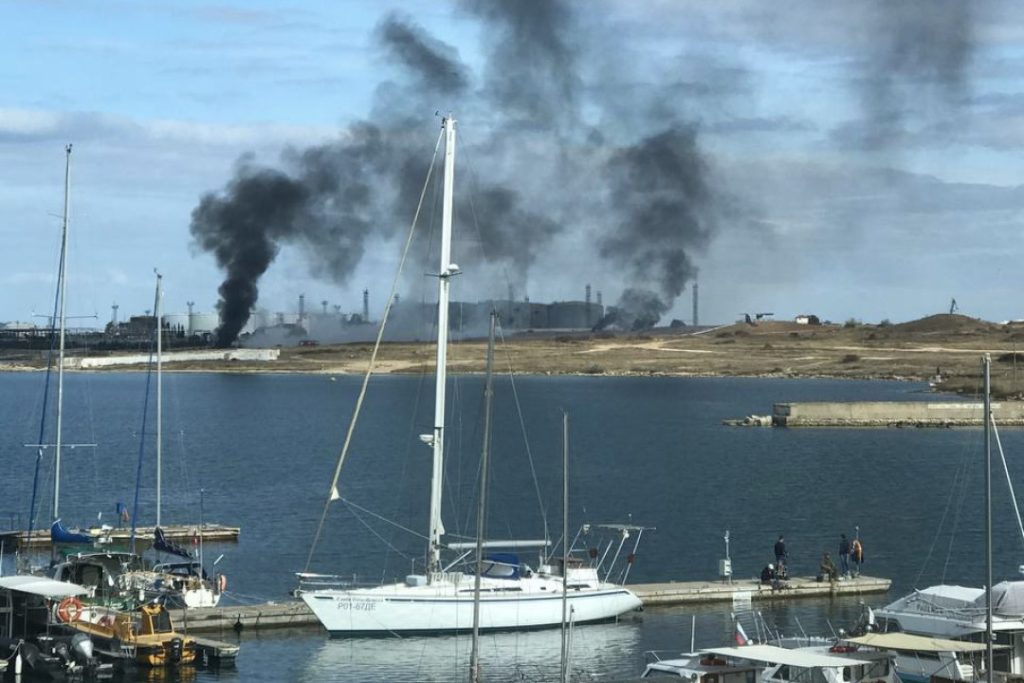
Photo: Smoke rises over Sevastopol harbor after Ukraine’s successful drone attack October 9. (Kyiv Independent)
At the end of October, in an attack that “has no equivalent in the history of naval warcraft”, Ukraine sent naval drones into the Sevastopol, Crimea, harbor of the kremlin’s Black Sea Fleet. Seven maritime and nine aerial drones were reported to have been used in the coordinated attack, which damaged the flagship of the Russian Black Sea Fleet Admiral Makarov among other vessels.
In a response laden with lies and fake outrage, the kremlin immediately announced it was suspending participation in the Black Sea Initiative deal. However, this time, moscows bluff and bluster was ignored. Ships already loaded with grain in Ukrainian ports continued departing without delay. moscow rescinded its suspension within days.
⏩The three-month grain export agreement is set to expire on November 19 while the UN seeks to extend the deal for another year. Russia is, of course, already complaining and demanding more concessions. But, since its short withdrawal from the agreement in October didn’t stop the initiative, the aggressor country probably has influence in the matter.
Moscow is on its back heels. Now is the time for the world to unite and end its ability to wage food insecurity and famine on the globe.
SOURCES
Black Earth Makes Ukraine an Important Agricultural Destination, Bunge
What’s so special about Ukraine’s black soil?, TRT
Українські чорноземи планують вивозити вагонами — заява, Agropolit
Collectivization in the Soviet Union, Wikipedia
Russia Smuggling Ukrainian Grain to Help Pay for Putin’s War, PBS
Tracking where Russia is taking Ukraine’s stolen grain, BBC
Russians wreak havoc on Ukrainian farms, mining fields and stealing equipment, NPR
Putin’s Destruction of Ukrainian Farms, US Embassy Luxembourg
Ukrainian grain exports explained, European Council
Russia’s Black Sea blockade pushing millions towards famine, G7 says, The Guardian
Three more grain ships set sail from Ukraine amid questions about their safety, New York Times
Rebuilding Ukraine’s Agriculture Sector: Emerging Priorities, CSIS
Black Sea Grain Initiative, Wikipedia
The Black Sea Grain Initiative: What it is, and why it’s important for the world, United Nations
How much grain has been shipped from Ukraine?, BBC
Investigation: Oct. 29 drone attack likely hit Russian frigate Admiral Makarov in Sevastopol
UN, Russia Grain, Fertilizer Exports Talks End Without Breakthrough, Moscow Times
